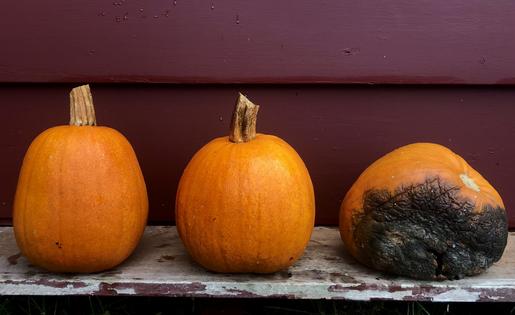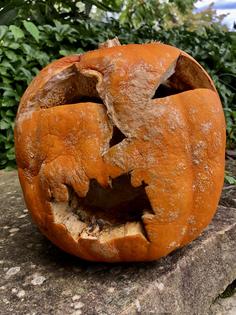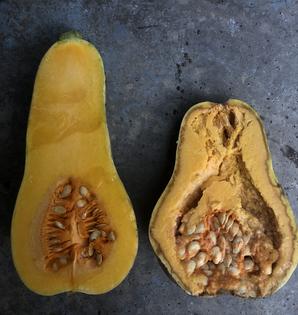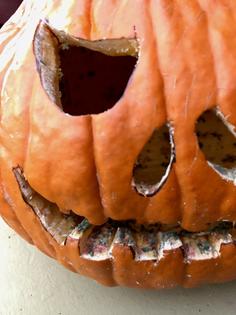How to keep your jack-o'-lantern from turning into moldy, maggoty mush before Halloween
Published in News & Features
For many Americans, pumpkins mean that fall is here. In anticipation, coffee shops, restaurants and grocery stores start their pumpkin flavor promotions in late August, a month before autumn officially begins. And shoppers start buying fresh decorative winter produce, such as pumpkins and turban squash, in the hot, sultry days of late summer.
But these fruits – yes, botanically, pumpkins and squash are fruits – don’t last forever. And they may not even make it to Halloween if you buy and carve them too early.
As a plant pathologist, gardener and self-described pumpkin fanatic, I have both boldly succeeded and miserably failed at growing, properly carving and keeping these iconic winter squash in their prime through the end of October. Here are some tips that can help your epic carving outlast the Day of the Dead.
This may seem obvious, but shop for a pumpkin in the same way that you shop the produce aisle. Whether you plan to carve them or not, choose pumpkins that are not damaged, dented or diseased. Is the stem loose? Is there a clear break in the rind? Are there any water-soaked spots on the exterior?
Post-harvest diseases – those that occur after the pumpkin is removed from the vine – can happen anywhere between the field where they were grown and your front step. A bruise or crack will allow opportunistic fungi, bacteria, water molds and small insects to invade and colonize your pumpkins. Keeping the rind defect-free and stem intact ensures your prized pumpkin a longer shelf life.
The trip home also matters. Most of us transport pets, kids, muddy hiking boots and food in our cars, which makes our vehicles giant petri dishes harboring common environmental molds and bacteria. Some of those microbes could colonize your unsuspecting pumpkins.
Secure your pumpkins en route to your house so they don’t suffer bruising or stem breakage. My family often uses seat belts to protect ours. Once home, don’t carry your pumpkin by the stem, which can lead to breakage, especially if it is big and heavy.
Pumpkins spend most of their lives in fields, developing on top of soil that teems with fungi, bacteria, water molds and soil-dwelling animals like nematodes, insects and mites. Removing these organisms, and any eggs they may have affixed to your pumpkin’s rind, will help preserve it.
To get rid of them, wipe down your pumpkins, preferably with a bleach wipe or two. This is especially important if you plan to carve them: Piercing the dirty rind with a sharp tool will introduce these eager visitors deeper into the heart of your pumpkin. Be sure to use clean tools as well. Microbes can reside and multiply on small amounts of pumpkin debris stuck in the teeth of dirty carving knives.
Even if you are not carving your pumpkin, wiping it down isn’t a bad idea, since it may have small bruises or cracks that are easy to overlook.
...continued















Comments